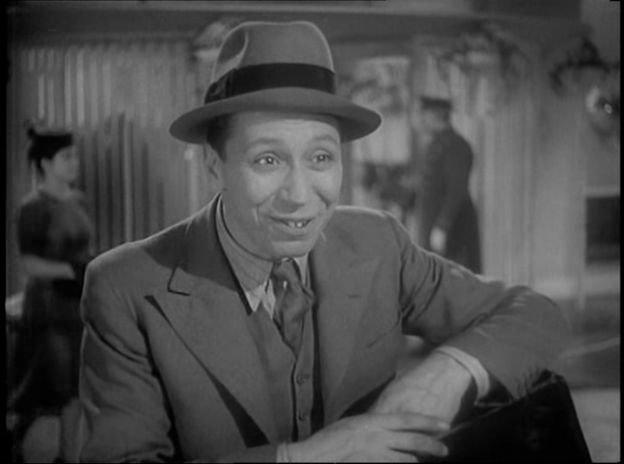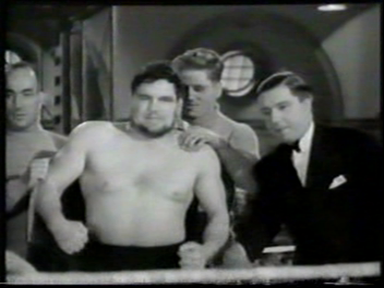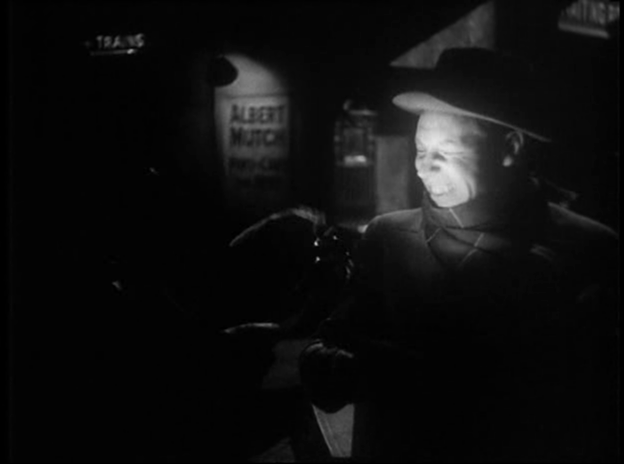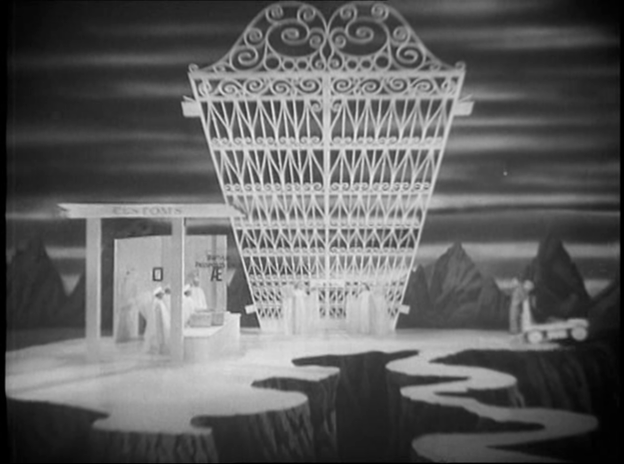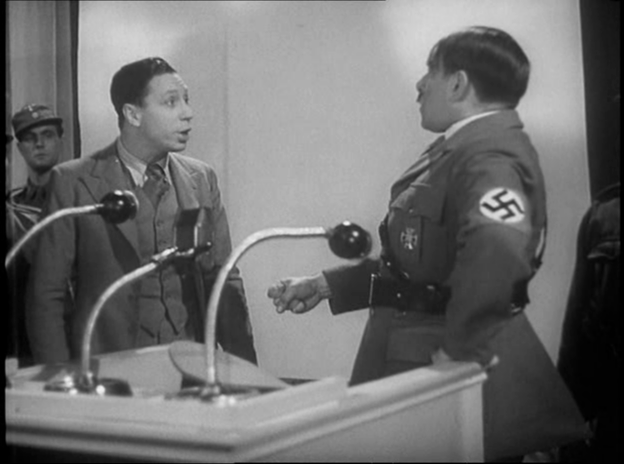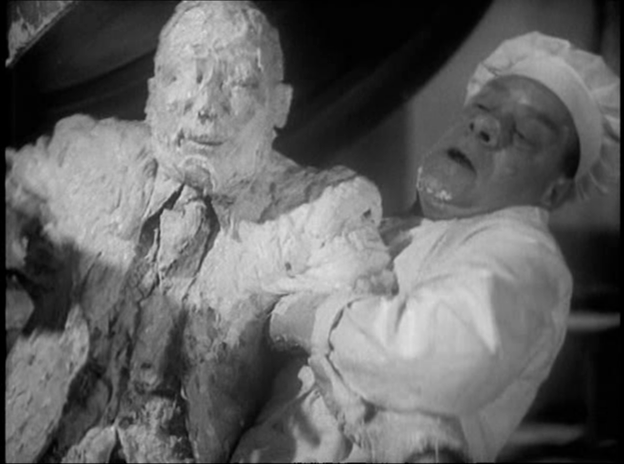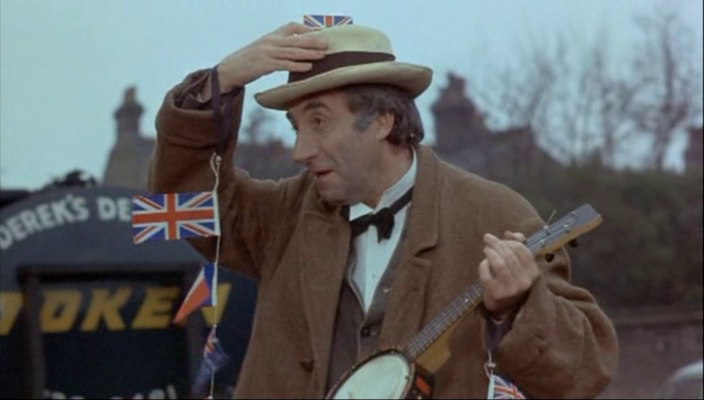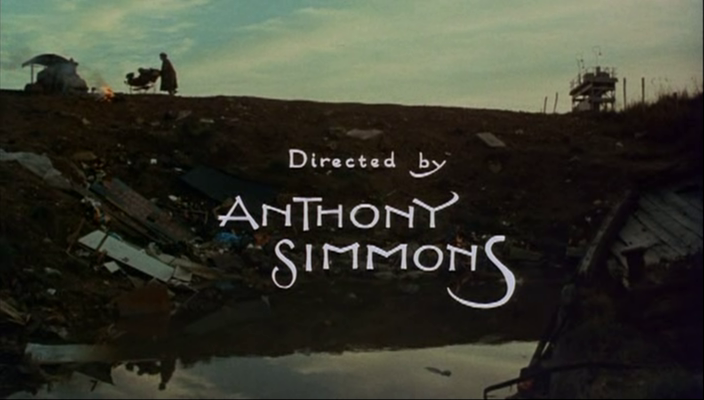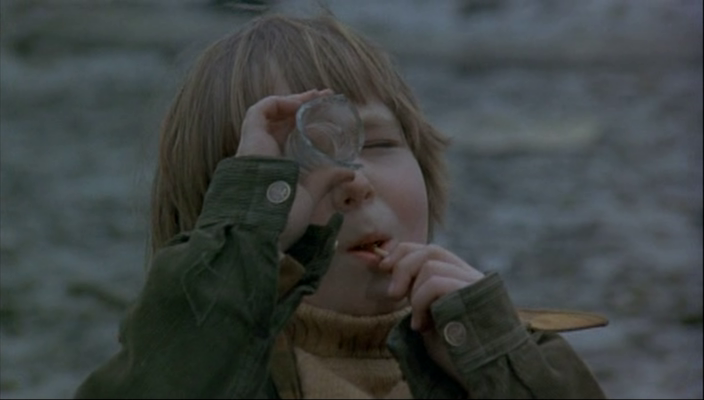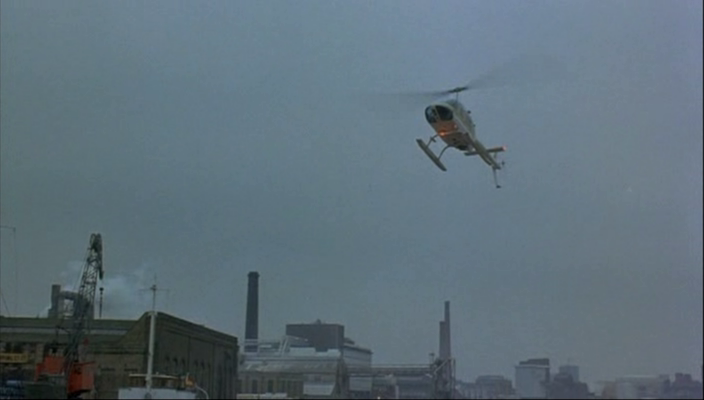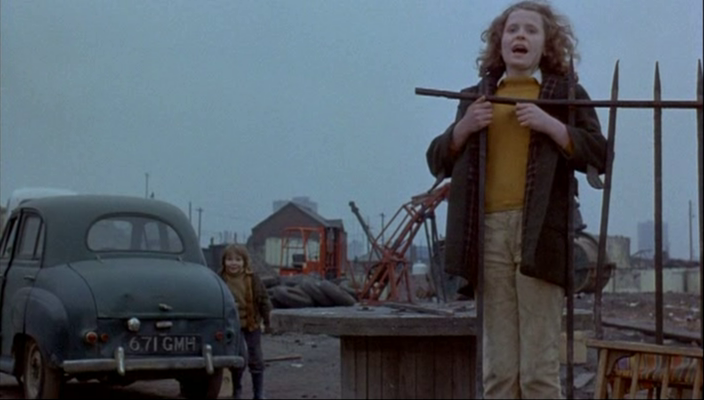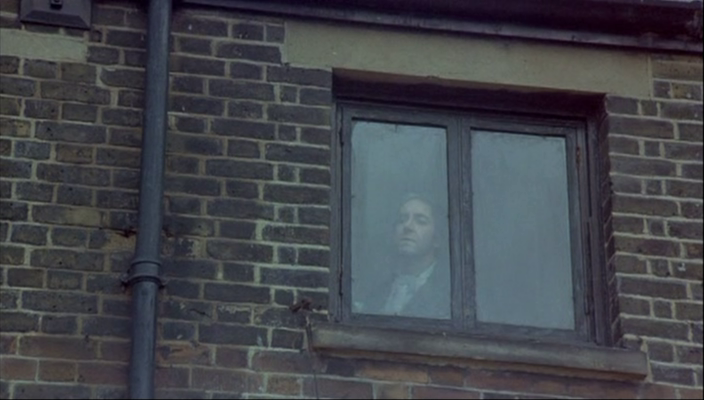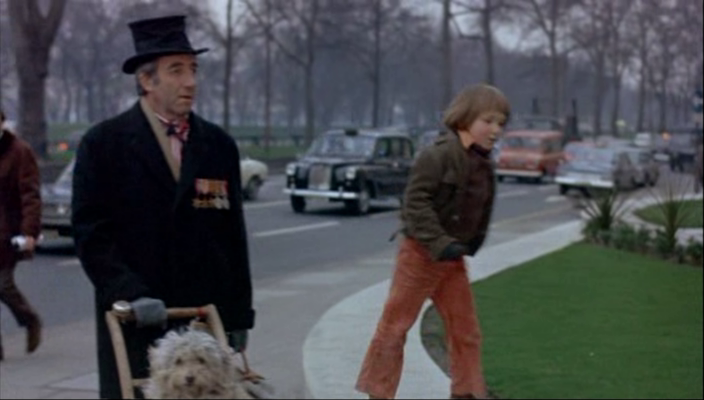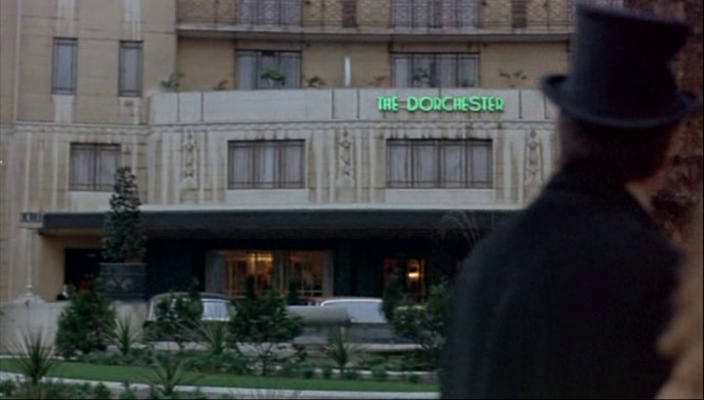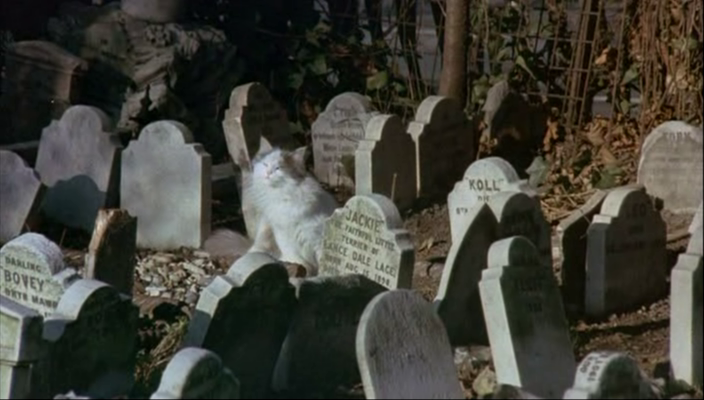“Gee, I shout all the way through this picture.” ~ Steve Martin, on rewatching THE JERK.

Will Hay might not be such an Awful British Comedian. He has his wearing qualities, but he’s undoubtedly a skilled character man, and the films aren’t all bad. Some of them even seem like proper films.
Hay was immensely popular, but then so was Norman Wisdom, so that doesn’t get him out of trouble necessarily. He was well enough known for Michael Redgrave to attempt a brief impersonation in THE LADY VANISHES, without anyone pausing to wonder how this would play in the US.

Hay began as a Fred Karno comic, postdating Chaplin and Laurel, He was a man of many parts, an amateur astronomer who discovered or anyway confirmed the spot on Saturn.
Hay’s heyday was in the late thirties to the early fifies, same as George Formby’s. Hay’s stuff is more sophisticated, there’s some mild satire in there. Unlike Formby and Wisdom, who amused children by personating them, Hay amused children and adults by playing a very stupid adult, a man who at least knows that he’s supposed to be adult, supposed to know things, have dignity, etc. He played officious authority figures too incompetent to actually project any real authority.
Hay does not exactly have a funny face. Homely, yes. A popular radio comedian, his first feature, RADIO PARADE OF 1935 reveals him with an austere crew cut that makes him look like Boris Karloff in THE BLACK CAT. Karloff could do comedy but he did not have a face for fun. Hay’s later floppy little fringe and pince-nez emphasised his twit aspect, and probably made it easy for him to go unrecognized in public. Lose the specs, stop scowling, adjust his hair and he’d be fairly anonymous.
Hay’s career straddles the two major makers of Awful British Comedian films, Gainsborough and Ealing, both of whom are better know for other stuff — costume pictures and delightful little comedies starring proper actors.
We first ran OH, MISTER PORTER! (1937), a popular early entry, a knock-off of Arnold Ridley’s THE GHOST TRAIN, filmed directly three times and ripped off several more. A Scooby-Doo plot of fake haunting as cover for a gun-smuggling ring. Cue fight in warehouse.


Hay, as a stuffy and inept branch manager of a Northern Irish railway station, is actually part of a trio here. He’d co-starred with Graham Moffat, a chubby youth who initially played schoolboys, always called Albert, in WHERE THERE’S A WILL, WINDBAG THE SAILOR and GOOD MORNING, BOYS! Now the duo was joined by Moore Marriott. Moffat was a child who kept on playing children after he’d grown up, whereas Marriott was a young man who kept playing old men after he got old. His stylisation and makeup (Irish beard, blacked-out teeth) didn’t change no matter how close in years he got to the relics he was portraying. Here he’s younger than me.
All three are gifted clowns. Hay is very broad, and if he has a vice it’s shouting. It’s natural that he should do it, his character is a parody of the petty jobsworths known and hated throughout Britain. But it can be wearing. Marriott can match him bellow for bellow, just in a higher octave. The one bit of truly brilliant filmmaking in OMP comes when, during a steam chase wherein the cast have been bellowing doubletalk at each other for what feels like ten minutes, screeching over the incessant clatter of their locomotive, ubiquitous French helmer Marcel Varnel cuts to a station office in sudden, shocking silence. It’s a genuinely dazzling moment, but it has nothing to do with comedy.
But apparently this went down a storm at the CInematheque when Bertrand Tavernier screened it, the French delighted to see one of their own triumphing in a damp climate. Subtitling would have helped, though I pity whoever had the job.
Varnel, co-director of CHANDU THE MAGICIAN (he did the bad bits, I think) — ah, the Lugosi connection again! — made a lot of movies with Hay, Formby, the Crazy Gang and others. He has a kind of anti-gift for visual gags, framing too close (an obsessive flaw of 30s and 40s comedy — even Preston Sturges, a sincere lover of slapstick, shoots it as if it were dialogue) and cutting too often and in exactly the worst places. But there are laughs here. The prolonged “thrilling” chase seems to have become a staple, though Formby was already trying for Big Finishes in his own gawky way.

My favourite aspect of this film was Graham Moffat, because he’s relatively understated, the opposite of what you expect child comedians to be. I suppose his fat and sleepy qualities excused him from overacting. In a way he’s sort of exhibiting himself rather than feeling obliged to give a performance. He retired to run a pub, but would make a comeback whenever asked, even cropping up in MOTHER RILEY MEETS THE VAMPIRE. Hay seems to have gotten fed up sharing screen time with Marriott and Moffat, and broke up the act, saying he had no wish to be one third of a three-legged race. But his subsequent films tend to paste him together with twit Claude Hulbert, and another superannuated schoolboy, Charles Hawtrey, so he never really escaped the ensemble. He’s not quite the kind of comic who can carry a whole film surrounded by straight stooges — you need supporting clowns.






We ran THE GHOST OF ST MICHAEL’S because it’s set in Scotland and has Hulbert and Hawtrey as well as Raymond Huntley and John Laurie — British cinema’s resident Gloomy Scot, who recites the ghostly legend, a role he also undertook in OLD MOTHER RILEY’S GHOSTS. Will plays an inept schoolteacher (his most frequent guise) uncovering a Nazi spy in a Gothic castle schoolhouse. Interesting to see Ealing try for a Universal horror look. Fiona liked this better. There are delightfully crappy tabletop miniatures (other Hay films have more ambitious VFX) and there’s less shouting. Hay seems to have had an affinity for terror — all three comics get trapped in an infernal chamber with a Fu Manchu descending ceiling. Quite a bit of shouting there.


Hawtrey is a genuinely uncanny figure. Emaciated and VERY camp, he specialised in schoolboys for decades (he even wanders through shot in Hitchcock’s SABOTAGE) despite being seemingly born with a nonagenarian’s voice. As a sort of pixilated queen he became a CARRY ON regular in later life, in which context hilarity was conjured by having him compete romantically with Kenneth Williams (a queen of the more acid variety) for the hand of fat lady Hattie Jacques. A very British form of absurdism.

Realising that Hay co-directed two films with Basil Dearden, a proper director, I had to try one. I ended up watching both. THE GOOSE STEPS OUT used to be seen as a bit of a classic, but has faded into obscurity. The addition of Dearden as director makes an immediate obvious difference: though Varnel is quite smooth and elegant in his movements, with Dearden we get proper dramatic camera angles. Hay plays an officious twit of a schoolteacher (again) with an accidental resemblance to a Nazi spy. British Intelligence, who number the great John Williams (DIAL M FOR MURDER) among their ranks, parachute him behind enemy lines to replace his likealook teaching Hitler Youth to pass for British, with his secret mission being to steal an experimental Gas Fire Bomb. The Hitler Youth include Barry Morse of Space: 1999, a willowy young Peter Ustinov, and the inevitable Charles Hawtrey.



Best scene is Hay teaching the Hitlerjugend British mannerisms, witless stuff really but somehow very gratifying — fascism reduced to the ridiculous. Most Hay films have a setpiece lesson where he has to witter on about something he knows nothing about. This is a rogue variant as he’s spewing deliberate misinformation. There’s a very prolonged aeroplane climax with non-convincing but eager effects work from Roy Kellino. Special effects are never as good as real stunts (models don’t understand about timing), but none of this stuff could have been done full-scale (they nearly do a GORGO on Big Ben), except turning the plane interior upside down, which they have fun with.



The film is fainthearted in its antifascism — none of the Nazis is killed, proving my earlier point (see THE CAMELS ARE COMING) that cold-blooded comic murder was reserved for non-whites.



Or almost: MY LEARNED FRIEND, Hay’s last film, made in ’43 but set before the war to excuse it having no wartime references, is a comedy of murder, a real precursor of Ealing’s KIND HEARTS AND CORONETS and THE LADYKILLERS. Hay departs from his usual character, playing a crooked barrister, inept certainly but possessed of a certain low vegetable cunning. His mark is Claude Hulbert, hired to prosecute him, fired for failing to secure a conviction, and then lured into business with the erstwhile accused.

But a dissatisfied former client is after Hay — he’s played by Mervyn Johns in a rehearsal for his psychopathic act in DEAD OF NIGHT (which was Dearden again, among others). Johns’ psycho explains he’s bumping off the six people he blames for his conviction, and he’s saving Hay for last. So the duo rush about trying and failing to save the other entries on the kill list. Surprisingly, these are not played by notable guest stars, but we do get a substantial cameo from Ernest Thesiger as a lunatic, and an insubstantial one from the reliably dwarfish Ian Wilson.


What’s impressive here, apart from Hay finding a new way to use his air of seediness, is the sheer nastiness of the comedy. One victim is done in with a tiger trap created by Thesiger with the murderer’s connivance — a POV shot shows not only a fatal drop but spikes at the bottom. Remove that and you’d simply have an amusing trapdoor demise. With it, the thing becomes painful and frightening.



Another victim is a gangster, ‘Safety’ Wilson, known by that nickname because he slashes up victims with a safety razor embedded in a cosh, a device that gets its own bloodcurdling closeups. It feels so worryingly specific it must have been in the newspapers at the time, part of the tabloid press’s usual panics about social disorder. It’s not remotely amusing, but it’s impressively grim.
For his penultimate crime, Johns plans to blow up the House of Lords (!), which leads to a Harold Lloyd type cliffhanger on the face of Big Ben — “borrowed” by the ’78 remake of THE 39 STEPS. This kind of thing never quite works with process shots, but Michael Relph’s sets are impressive and the comic terror of the protags is amusing. It feels oddly too innocent a climax to a comedy of murder (Dearden would attempt another homicide farce, THE GREEN MAN, but got removed from it — why, I wonder?)

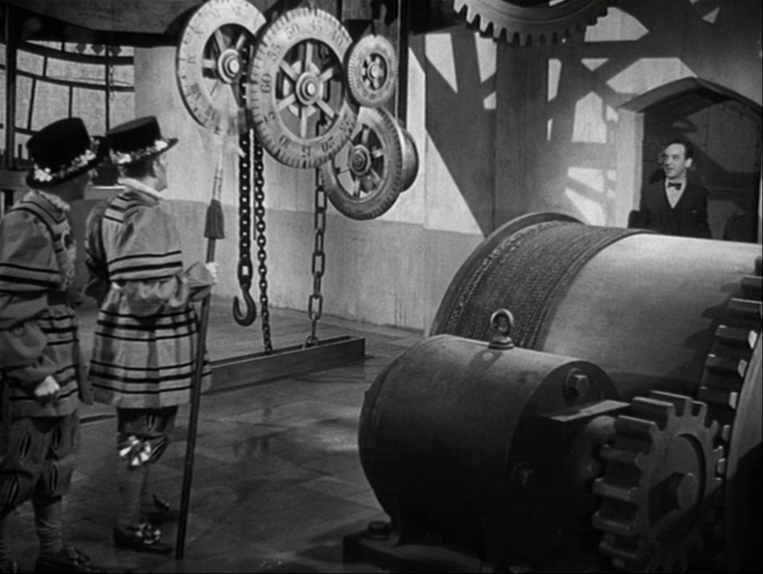


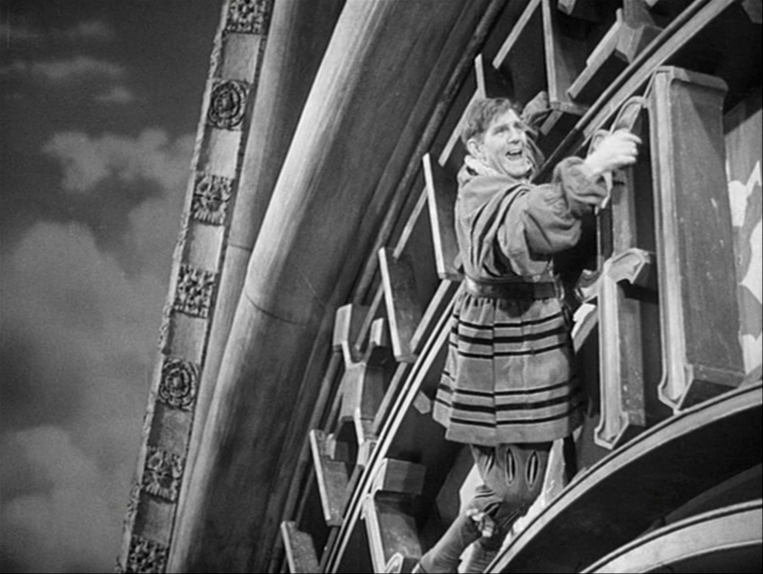
I remember reading about the scene in, I think, Millar and Reisz’s book The Technique of Film Editing. To get the laugh to work when Hay & Hulbert rush through a door and find themselves teetering on a platform below the clockface and above the city, the editor (Charles Hasse – DEAD OF NIGHT) discovered he had to revert to the non-continuity style of early 1900s cutting — inside the clock tower, we watch them rush through the door — cut to exterior — and the door OPENS AGAIN and they RUSH THROUGH AGAIN. The repetition was essential, he felt, to create audience anticipation and therefore suspense.)
Ill health sadly forced Hay into retirement after this one. It’s tempting to wonder what he might have gotten up to in post-war cinema, but it’s also possible that losing this big earner pushed Ealing into making less comedian-centred comedies. It’s curious that, while the War generally raised the ambitions of everyone making movies in Britain, Ealing didn’t hit their stride until a few years after peace broke out.
Verdict: Will Hay is Not Actually Awful, and I can even see myself watching the other films in my purchased-on-a-whim box set.
STOP PRESS: already chalked up ASK A POLICEMAN and HEY! HEY! USA! and both are of interest. Stay tuned.
